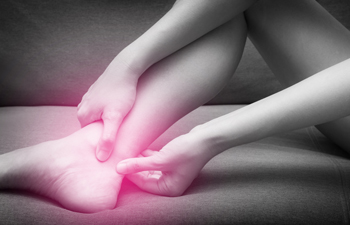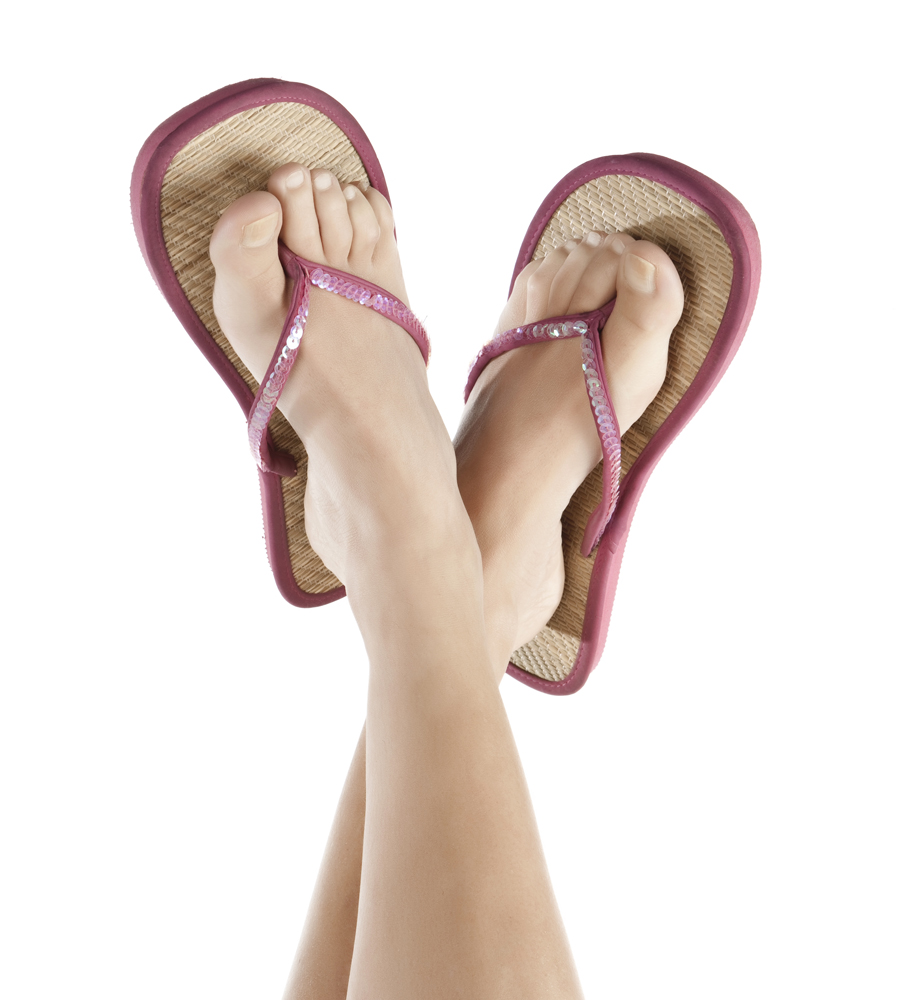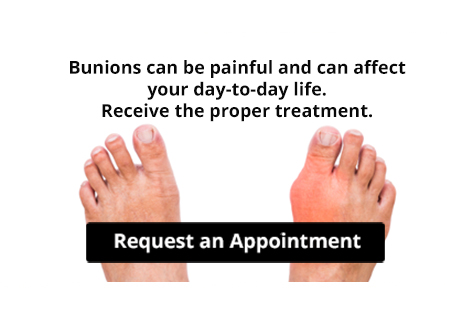Blog
Flip Flops and Foot Health
 Many people enjoy the simplicity of wearing flip flops. They are easy to slip into, which makes them a desirable shoe to wear. Despite their popularity, research has indicated they can be harmful to the feet. The arch is typically absent in this type of shoe, which may cause pain in the feet and ankles. Additionally, flip flops lack shock absorption, and there is minimal cushioning in the heel area. Many people also have to curl their toes which helps to provide stability in these shoes, and this may change the way you walk. It is beneficial wear shoes that have a strap on the back, which aids in supporting the foot. If you would like additional information about how flip flops affect the feet, it is suggested that you consult with a podiatrist.
Many people enjoy the simplicity of wearing flip flops. They are easy to slip into, which makes them a desirable shoe to wear. Despite their popularity, research has indicated they can be harmful to the feet. The arch is typically absent in this type of shoe, which may cause pain in the feet and ankles. Additionally, flip flops lack shock absorption, and there is minimal cushioning in the heel area. Many people also have to curl their toes which helps to provide stability in these shoes, and this may change the way you walk. It is beneficial wear shoes that have a strap on the back, which aids in supporting the foot. If you would like additional information about how flip flops affect the feet, it is suggested that you consult with a podiatrist.
Flip-flops are not always the best choice of footwear. If you have any concerns about your feet or ankles, contact Shaun J. Limon, DPM and Lisa Griffith-Limon, DPM from Limons Foot & Ankle Care. Our doctors will assist you with all of your foot and ankle needs.
Flip-Flops and Feet
When the weather starts warming up, people enjoy wearing flip-flops. Flip-flops are comfortable, stylish, and easy to slip on and off; they're perfect for any summer beach goer. However, these shoes can cause harm to the feet.
How Can Flip-Flops Affect Me Long-Term?
- Ankle problems
- Hip problems
- Lower back problems
- Pain in the balls of the feet
- Problems with foot arches
- Changes in the way you walk
Are There Injuries Associated with Flip-Flops?
Yes. Since flip-flops are relatively weak and do not provide the same amount of support as sneakers, people who wear flip-flops regularly are more susceptible to injuries. On top of that, the open nature of the shoe makes your feet more prone to other problems, such as cuts and even infections. Common injuries and ailments include:
- Sprained ankles
- Blisters
- Infections
- Cuts and Scrapes
I like Wearing Flip-Flops. Are There Safe Alternatives?
When buying flip-flops, try to find ones that have sturdy soles and that are made of high-quality materials that will support for your feet. These flip-flops will cost more but will also last longer as a result.
If you have any questions please feel free to contact our offices located in Bradenton and Lakewood Ranch, FL . We offer the newest diagnostic and treatment technologies for all your foot and ankle needs.
Read more about Flip Flops and FeetGout Pain Can Be Managed
Having Healthy Feet Is an Effective Way to Prevent Falls for Seniors
Seniors are at great risk of falls, and falls may lead to injuries and complications. One of the best ways to prevent these falls is to examine the health of your own feet. Doctors recommend a few tips to assure your feet are healthy. First, do not ignore pain. You may have a condition that is treatable. Next, check for bumps, lumps or changes. You can additionally perform simple stretching exercises to strengthen feet and ankles, as well as wear padding in comfortable shoes. These simple tasks may protect you from unnecessary, and potentially dangerous, falls. Be sure to consult a podiatrist if you notice any changes, issues or pain in the foot and ankle area.
Preventing falls among the elderly is very important. If you are older and have fallen or fear that you are prone to falling, consult with Shaun J. Limon, DPM and Lisa Griffith-Limon, DPM from Limons Foot & Ankle Care. Our doctors will assess your condition and provide you with quality advice and care.
Every 11 seconds, an elderly American is being treated in an emergency room for a fall related injury. Falls are the leading cause of head and hip injuries for those 65 and older. Due to decreases in strength, balance, senses, and lack of awareness, elderly persons are very susceptible to falling. Thankfully, there are a number of things older persons can do to prevent falls.
How to Prevent Falls
Some effective methods that older persons can do to prevent falls include:
- Enrolling in strength and balance exercise program to increase balance and strength
- Periodically having your sight and hearing checked
- Discuss any medications you have with a doctor to see if it increases the risk of falling
- Clearing the house of falling hazards and installing devices like grab bars and railings
- Utilizing a walker or cane
- Wearing shoes that provide good support and cushioning
- Talking to family members about falling and increasing awareness
Falling can be a traumatic and embarrassing experience for elderly persons; this can make them less willing to leave the house, and less willing to talk to someone about their fears of falling. Doing such things, however, will increase the likelihood of tripping or losing one’s balance. Knowing the causes of falling and how to prevent them is the best way to mitigate the risk of serious injury.
If you have any questions, please feel free to contact our offices located in Bradenton and Lakewood Ranch, FL . We offer the newest diagnostic and treatment technologies for all your foot care needs.
Read more about Falls PreventionPossible Causes of Foot Pain
 Many people experience several forms of foot pain. This may be a result of spending the majority of the day walking or standing. A common foot ailment is known as athlete’s foot, and is considered to be a fungal infection of the skin. The symptoms that are associated with this condition consist of itching or blisters between the toes, and the soles of the feet may peel and appear red. Wearing shoes that fit poorly is a cause of ingrown toenails, and this condition can produce considerable pain and discomfort. In severe cases, there can be drainage from the toenail which can indicate an existing infection. A bony protrusion on the side of the big toe is indicative of a bunion. A common cause of this is wearing shoes that are too narrow. Additionally, if there is a family history of bunions, the chances of developing this ailment may increase. If you are having any type of foot pain, it is suggested that you schedule a consultation with a podiatrist who can properly treat any foot condition.
Many people experience several forms of foot pain. This may be a result of spending the majority of the day walking or standing. A common foot ailment is known as athlete’s foot, and is considered to be a fungal infection of the skin. The symptoms that are associated with this condition consist of itching or blisters between the toes, and the soles of the feet may peel and appear red. Wearing shoes that fit poorly is a cause of ingrown toenails, and this condition can produce considerable pain and discomfort. In severe cases, there can be drainage from the toenail which can indicate an existing infection. A bony protrusion on the side of the big toe is indicative of a bunion. A common cause of this is wearing shoes that are too narrow. Additionally, if there is a family history of bunions, the chances of developing this ailment may increase. If you are having any type of foot pain, it is suggested that you schedule a consultation with a podiatrist who can properly treat any foot condition.
Foot Pain
Foot pain can be extremely painful and debilitating. If you have a foot pain, consult with Shaun J. Limon, DPM and Lisa Griffith-Limon, DPM from Limons Foot & Ankle Care. Our doctors will assess your condition and provide you with quality foot and ankle treatment.
Causes
Foot pain is a very broad condition that could be caused by one or more ailments. The most common include:
- Bunions
- Hammertoes
- Plantar Fasciitis
- Bone Spurs
- Corns
- Tarsal Tunnel Syndrome
- Ingrown Toenails
- Arthritis (such as Gout, Rheumatoid, and Osteoarthritis)
- Flat Feet
- Injury (from stress fractures, broken toe, foot, ankle, Achilles tendon ruptures, and sprains)
- And more
Diagnosis
To figure out the cause of foot pain, podiatrists utilize several different methods. This can range from simple visual inspections and sensation tests to X-rays and MRI scans. Prior medical history, family medical history, and any recent physical traumatic events will all be taken into consideration for a proper diagnosis.
Treatment
Treatment depends upon the cause of the foot pain. Whether it is resting, staying off the foot, or having surgery; podiatrists have a number of treatment options available for foot pain.
If you have any questions, please feel free to contact our offices located in Bradenton and Lakewood Ranch, FL . We offer the newest diagnostic and treatment technologies for all your foot care needs.
Read more about Foot PainAre Bunions Affecting Your Everyday Life?
How to Treat Ankle Sprains
Ankle sprains are considered to be a common foot injury. Many people will experience this condition at some point in their lives, and pain and discomfort often accompanies this ailment. Research has indicated the importance of treating your ankle sprain as quickly as possible. This typically begins with resting and elevating the foot which may reduce any existing swelling. Mild relief can be found when compression is applied to the ankle and surrounding areas. This can be accomplished by wrapping the ankle in an elastic bandage, and making sure it feels comfortable. This can help to ensure proper circulation while the healing process takes place. If you have sprained your ankle, it is suggested to consult with a podiatrist who can properly treat this condition.
Although ankle sprains are common, they aren’t always minor injuries. If you need your ankle injury looked at, contact Shaun J. Limon, DPM and Lisa Griffith-Limon, DPM from Limons Foot & Ankle Care. Our doctors can provide the care you need to keep you pain-free and on your feet.
How Does an Ankle Sprain Occur?
Ankle sprains are the result of a tear in the ligaments within the ankle. These injuries may happen when you make a rapid shifting movement while your foot is planted. A less common way to sprain your ankle is when your ankle rolls inward while your foot turns outward.
What Are the Symptoms?
- Pain at the sight of the tear
- Bruising/Swelling
- Ankle area is tender to touch
- In severe cases, may hear/feel something tear
- Skin discoloration
Preventing a Sprain
- Wearing appropriate shoes for the occasion
- Stretching before exercises and sports
- Knowing your limits
Treatment of a Sprain
In many cases, the RICE method (Rest, Ice, Compression, and Elevate) is used to treat ankle sprains. However, you should see a podiatrist to see which treatment option would work best with your injury. In severe cases, surgery may be required.
It is important to ask your doctor about rehab options after you receive treatment for your injury. Stretching, strength training, and balance exercises may help the ankle heal while also preventing further injury.
If you have any questions, please feel free to contact our offices located in Bradenton and Lakewood Ranch, FL . We offer the newest diagnostic and treatment technologies for all your foot care needs.
Read more about Ankle SprainsPossible Health Conditions May Lead to Poor Circulation
 Poor circulation is defined as reduced blood flow to specific parts of the body. There are several symptoms that are associated with this condition. These often include dry skin, feet or hands that have a tingling or numbing sensation, and any existing wounds may have difficulty in healing. Research has indicated that diabetes, elevated cholesterol, and high blood pressure may increase the risk of developing this ailment. Relief may be found when a gentle exercise regime is frequently practiced, in addition to maintaining adequate blood pressure levels. If you are a diabetic patient, it is suggested that you consult with a podiatrist who can perform tests for poor circulation in the feet.
Poor circulation is defined as reduced blood flow to specific parts of the body. There are several symptoms that are associated with this condition. These often include dry skin, feet or hands that have a tingling or numbing sensation, and any existing wounds may have difficulty in healing. Research has indicated that diabetes, elevated cholesterol, and high blood pressure may increase the risk of developing this ailment. Relief may be found when a gentle exercise regime is frequently practiced, in addition to maintaining adequate blood pressure levels. If you are a diabetic patient, it is suggested that you consult with a podiatrist who can perform tests for poor circulation in the feet.
While poor circulation itself isn’t a condition; it is a symptom of another underlying health condition you may have. If you have any concerns with poor circulation in your feet contact Shaun J. Limon, DPM and Lisa Griffith-Limon, DPM of Limons Foot & Ankle Care. Our doctors will treat your foot and ankle needs.
Poor Circulation in the Feet
Peripheral artery disease (PAD) can potentially lead to poor circulation in the lower extremities. PAD is a condition that causes the blood vessels and arteries to narrow. In a linked condition called atherosclerosis, the arteries stiffen up due to a buildup of plaque in the arteries and blood vessels. These two conditions can cause a decrease in the amount of blood that flows to your extremities, therefore resulting in pain.
Symptoms
Some of the most common symptoms of poor circulation are:
- Numbness
- Tingling
- Throbbing or stinging pain in limbs
- Pain
- Muscle Cramps
Treatment for poor circulation often depends on the underlying condition that causes it. Methods for treatment may include insulin for diabetes, special exercise programs, surgery for varicose veins, or compression socks for swollen legs.
As always, see a podiatrist as he or she will assist in finding a regimen that suits you. A podiatrist can also prescribe you any needed medication.
If you have any questions, please feel free to contact our offices located in Bradenton and Lakewood Ranch, FL . We offer the newest diagnostic and treatment technologies for all your foot care needs.
Read more about Causes Symptoms and Treatment for Poor Circulation in the FeetAre You Suffering From Ingrown Toenails?
Aging and the Achilles Tendon
 The Achilles tendon is known to be the largest tendon in the body. It connects the heel to the calf muscles and is responsible for allowing the foot to point and flex. There are several symptoms patients notice if this tendon should become torn. These often include extreme pain in the back of the ankle, swelling, bruising, or a popping sound as the injury happens. It is common for the Achilles tendon to become weak as the aging process occurs, or if medical conditions such as diabetes or arthritis exist . Additionally, this condition may occur if you fall unexpectedly or suddenly step off a curb. If you have ruptured your Achilles tendon, it is suggested that you meet with a podiatrist who can discuss the best treatment options for you.
The Achilles tendon is known to be the largest tendon in the body. It connects the heel to the calf muscles and is responsible for allowing the foot to point and flex. There are several symptoms patients notice if this tendon should become torn. These often include extreme pain in the back of the ankle, swelling, bruising, or a popping sound as the injury happens. It is common for the Achilles tendon to become weak as the aging process occurs, or if medical conditions such as diabetes or arthritis exist . Additionally, this condition may occur if you fall unexpectedly or suddenly step off a curb. If you have ruptured your Achilles tendon, it is suggested that you meet with a podiatrist who can discuss the best treatment options for you.
Achilles tendon injuries need immediate attention to avoid future complications. If you have any concerns, contact Shaun J. Limon, DPM and Lisa Griffith-Limon, DPM of Limons Foot & Ankle Care. Our doctors can provide the care you need to keep you pain-free and on your feet.
What Is the Achilles Tendon?
The Achilles tendon is a tendon that connects the lower leg muscles and calf to the heel of the foot. It is the strongest tendon in the human body and is essential for making movement possible. Because this tendon is such an integral part of the body, any injuries to it can create immense difficulties and should immediately be presented to a doctor.
What Are the Symptoms of an Achilles Tendon Injury?
There are various types of injuries that can affect the Achilles tendon. The two most common injuries are Achilles tendinitis and ruptures of the tendon.
Achilles Tendinitis Symptoms
- Inflammation
- Dull to severe pain
- Increased blood flow to the tendon
- Thickening of the tendon
Rupture Symptoms
- Extreme pain and swelling in the foot
- Total immobility
Treatment and Prevention
Achilles tendon injuries are diagnosed by a thorough physical evaluation, which can include an MRI. Treatment involves rest, physical therapy, and in some cases, surgery. However, various preventative measures can be taken to avoid these injuries, such as:
- Thorough stretching of the tendon before and after exercise
- Strengthening exercises like calf raises, squats, leg curls, leg extensions, leg raises, lunges, and leg presses
If you have any questions please feel free to contact our offices located in Bradenton and Lakewood Ranch, FL . We offer the newest diagnostic tools and technology to treat your foot and ankle needs.
Read more about What are Achilles Tendon InjuriesFoot Conditions May Affect the Elderly
 Research has indicated that one of the reasons elderly people develop uncomfortable foot conditions can come from a loss of cushioning in the feet. Additionally, as the aging process occurs, poor circulation is a common ailment among seniors. This can make it difficult for foot sores to heal properly. This condition may be remedied by sitting frequently throughout the day, and it is helpful to periodically stretch the feet. There are some foot conditions that can be avoided when the proper shoes are worn, and these often include corns, calluses, or bunions. Many elderly people develop athlete's foot, which is a contagious foot ailment. Wearing appropriate shoes while in public swimming pools, locker rooms, and surrounding areas can help to prevent this uncomfortable foot condition. It is suggested that you consult with a podiatrist if you would like additional information about how to care for elderly feet.
Research has indicated that one of the reasons elderly people develop uncomfortable foot conditions can come from a loss of cushioning in the feet. Additionally, as the aging process occurs, poor circulation is a common ailment among seniors. This can make it difficult for foot sores to heal properly. This condition may be remedied by sitting frequently throughout the day, and it is helpful to periodically stretch the feet. There are some foot conditions that can be avoided when the proper shoes are worn, and these often include corns, calluses, or bunions. Many elderly people develop athlete's foot, which is a contagious foot ailment. Wearing appropriate shoes while in public swimming pools, locker rooms, and surrounding areas can help to prevent this uncomfortable foot condition. It is suggested that you consult with a podiatrist if you would like additional information about how to care for elderly feet.
Proper foot care is something many older adults forget to consider. If you have any concerns about your feet and ankles, contact Shaun J. Limon, DPM and Lisa Griffith-Limon, DPM from Limons Foot & Ankle Care. Our doctors can provide the care you need to keep you pain-free and on your feet.
The Elderly and Their Feet
As we age we start to notice many changes in our body, but the elder population may not notice them right away. Medical conditions may prevent the elderly to take notice of their foot health right away. Poor vision is a lead contributor to not taking action for the elderly.
Common Conditions
- Neuropathy – can reduce feeling in the feet and can hide many life-threatening medical conditions.
- Reduced flexibility – prevents the ability of proper toenail trimming, and foot cleaning. If left untreated, it may lead to further medical issues.
- Foot sores – amongst the older population can be serious before they are discovered. Some of the problematic conditions they may face are:
- Gouging toenails affecting nearby toe
- Shoes that don’t fit properly
- Pressure sores
- Loss of circulation in legs & feet
- Edema & swelling of feet and ankles
Susceptible Infections
Diabetes and poor circulation can cause general loss of sensitivity over the years, turning a simple cut into a serious issue.
If you have any questions please feel free to contact our offices located in Bradenton and Lakewood Ranch, FL . We offer the newest diagnostic and treatment technologies for all your foot and ankle needs.
Read more about Taking Care of Elderly FeetMore...
Possible Foot Pain May Come from Wearing Flip-Flops
 Flip-flops are a popular shoe to wear during the summer months, despite the damage that may occur to your feet. It is a natural reaction to clench your toes to help keep the shoe on the foot, and this may gradually change the way you walk. The muscles in the feet and calves may be affected, and this can lead to having sharp pains in the heel. Research has indicated that it may be acceptable to wear flip-flops occasionally, and this may limit any potential damage the feet may receive. If you generally walk for long distances, it is best to wear a sandal that has a strap on the back to help keep the shoe on the foot. If you would like additional information on how flip-flops may affect the feet, speak to a podiatrist who can answer any questions you may have.
Flip-flops are a popular shoe to wear during the summer months, despite the damage that may occur to your feet. It is a natural reaction to clench your toes to help keep the shoe on the foot, and this may gradually change the way you walk. The muscles in the feet and calves may be affected, and this can lead to having sharp pains in the heel. Research has indicated that it may be acceptable to wear flip-flops occasionally, and this may limit any potential damage the feet may receive. If you generally walk for long distances, it is best to wear a sandal that has a strap on the back to help keep the shoe on the foot. If you would like additional information on how flip-flops may affect the feet, speak to a podiatrist who can answer any questions you may have.
Flip-flops can cause a lot of problems for your feet. If you have any concerns about your feet or ankles, contact Shaun J. Limon, DPM and Lisa Griffith-Limon, DPM from Limons Foot & Ankle Care. Our doctors will assist you with all of your foot and ankle needs.
Flip-Flops and Feet
Flip-flops have managed to become a summer essential for a lot of people. While the shoes may be stylish and easy to slip on and off, they can be dangerous to those who wear them too often. These shoes might protect you from fungal infections such as athlete’s foot, but they can also give you foot pain and sprained ankles if you trip while wearing them.
When Are They Okay to Wear?
Flip-flops should only be worn for very short periods of time. They can help protect your feet in places that are crawling with fungi, such as gym locker rooms. Athlete’s foot and plantar warts are two common fungi that flip-flops may help protect your feet against.
Why Are They Bad for My Feet?
These shoes do not offer any arch support, so they are not ideal for everyday use. They also do not provide shock absorption or heel cushioning which can be problematic for your feet. Additionally, you may suffer from glass cuts, puncture wounds, and stubbed toes since they offer little protection for your feet.
More Reasons Why They Are Bad for Your Feet
- They Slow You Down
- May Cause Blisters and Calluses
- Expose Your Feet to Bacteria
If you have any questions, please feel free to contact our offices located in Bradenton and Lakewood Ranch, FL . We offer the newest diagnostic and treatment technologies for all your foot care needs.
Read more about Flipping Out About Flip FlopsWhat Are Podiatrists?
 Podiatrists are doctors of podiatric medicine (DPM) and are qualified to diagnose and treat conditions that affect the foot or ankle. Podiatrists are also specialists in preventing, diagnosing, and treating lower extremity disorders, diseases, and injuries. They are the only doctors to receive specialized medical and surgical training and board certification in caring for the lower extremities. Oftentimes, they are the first to detect conditions like diabetes and cardiovascular disease because the foot is one of the first places in the body to exhibit symptoms. These physicians can specialize in various areas such as surgery and public health. They can also practice specialties like sports medicine, pediatrics, geriatrics, diabetic foot care, and more. If you are interested in learning more about podiatrists and what they do, then it would be beneficial to speak to an experienced podiatrist.
Podiatrists are doctors of podiatric medicine (DPM) and are qualified to diagnose and treat conditions that affect the foot or ankle. Podiatrists are also specialists in preventing, diagnosing, and treating lower extremity disorders, diseases, and injuries. They are the only doctors to receive specialized medical and surgical training and board certification in caring for the lower extremities. Oftentimes, they are the first to detect conditions like diabetes and cardiovascular disease because the foot is one of the first places in the body to exhibit symptoms. These physicians can specialize in various areas such as surgery and public health. They can also practice specialties like sports medicine, pediatrics, geriatrics, diabetic foot care, and more. If you are interested in learning more about podiatrists and what they do, then it would be beneficial to speak to an experienced podiatrist.
If you are experiencing pain in the feet or ankles, don’t join the stubborn majority refusing treatment. Feel free to contact Shaun J. Limon, DPM and Lisa Griffith-Limon, DPM from Limons Foot & Ankle Care. Our doctors can provide the care you need to keep you pain-free and on your feet.
What Is a Podiatrist?
Someone would seek the care of a podiatrist if they have suffered a foot injury or have common foot ailments such as heal spurs, bunions, arch problems, deformities, ingrown toenails, corns, foot and ankle problems, etc.
Podiatric Treatment
A podiatrist will treat the problematic areas of the feet, ankle or lower leg by prescribing the following:
- Physical therapy
- Drugs
- Orthotic inserts or soles
- Surgery on lower extremity fractures
A common podiatric procedure a podiatrist will use is a scanner or force plate which will allow the podiatrist to know the designs of orthotics. Patients are then told to follow a series of tasks to complete the treatment. The computer will scan the foot a see which areas show weight distribution and pressure points. The podiatrist will read the analysis and then determine which treatment plans are available.
If you have any questions please feel free to contact our offices located in Bradenton and Lakewood Ranch, FL . We offer the newest diagnostic and treatment technologies for all your foot and ankle needs.
Read more about What is a Podiatrist?Different Types of Peripheral Nerves
 Patients who have a type of neuropathy that is referred to as peripheral neuropathy may often notice a numbing or tingling sensation in their toes. As this condition worsens, there may be a burning pain that is felt, and this may be more noticeable at night. Additional symptoms may include weakened muscles or cramping, and balance and coordination may be affected. Research has shown there are three types of nerve groups, which may be distressed. Impulses that are sent from the brain and spinal cord to the muscles in the body are known as motor nerves. If damage to this group of nerves occurs, the result may be difficulty in walking. The function of the sensory nerves is to help people determine if an object is hot or cold, or rough or smooth. Tingling and numbness may happen if these nerves are affected by neuropathy. Additionally, the heart rate and blood pressure are controlled by autonomic nerves, and a patient who is afflicted with this type of neuropathy may experience dizziness or may have difficulty in swallowing. If you have any of these symptoms, please consult with a podiatrist who can guide you toward beginning the proper treatment.
Patients who have a type of neuropathy that is referred to as peripheral neuropathy may often notice a numbing or tingling sensation in their toes. As this condition worsens, there may be a burning pain that is felt, and this may be more noticeable at night. Additional symptoms may include weakened muscles or cramping, and balance and coordination may be affected. Research has shown there are three types of nerve groups, which may be distressed. Impulses that are sent from the brain and spinal cord to the muscles in the body are known as motor nerves. If damage to this group of nerves occurs, the result may be difficulty in walking. The function of the sensory nerves is to help people determine if an object is hot or cold, or rough or smooth. Tingling and numbness may happen if these nerves are affected by neuropathy. Additionally, the heart rate and blood pressure are controlled by autonomic nerves, and a patient who is afflicted with this type of neuropathy may experience dizziness or may have difficulty in swallowing. If you have any of these symptoms, please consult with a podiatrist who can guide you toward beginning the proper treatment.
Neuropathy
Neuropathy can be a potentially serious condition, especially if it is left undiagnosed. If you have any concerns that you may be experiencing nerve loss in your feet, consult with Shaun J. Limon, DPM and Lisa Griffith-Limon, DPM from Limons Foot & Ankle Care. Our doctors will assess your condition and provide you with quality foot and ankle treatment for neuropathy.
What Is Neuropathy?
Neuropathy is a condition that leads to damage to the nerves in the body. Peripheral neuropathy, or neuropathy that affects your peripheral nervous system, usually occurs in the feet. Neuropathy can be triggered by a number of different causes. Such causes include diabetes, infections, cancers, disorders, and toxic substances.
Symptoms of Neuropathy Include:
- Numbness
- Sensation loss
- Prickling and tingling sensations
- Throbbing, freezing, burning pains
- Muscle weakness
Those with diabetes are at serious risk due to being unable to feel an ulcer on their feet. Diabetics usually also suffer from poor blood circulation. This can lead to the wound not healing, infections occurring, and the limb may have to be amputated.
Treatment
To treat neuropathy in the foot, podiatrists will first diagnose the cause of the neuropathy. Figuring out the underlying cause of the neuropathy will allow the podiatrist to prescribe the best treatment, whether it be caused by diabetes, toxic substance exposure, infection, etc. If the nerve has not died, then it’s possible that sensation may be able to return to the foot.
Pain medication may be issued for pain. Electrical nerve stimulation can be used to stimulate nerves. If the neuropathy is caused from pressure on the nerves, then surgery may be necessary.
If you have any questions, please feel free to contact our offices located in Bradenton and Lakewood Ranch, FL . We offer the newest diagnostic and treatment technologies for all your foot care needs.
Read more about Neuropathy




